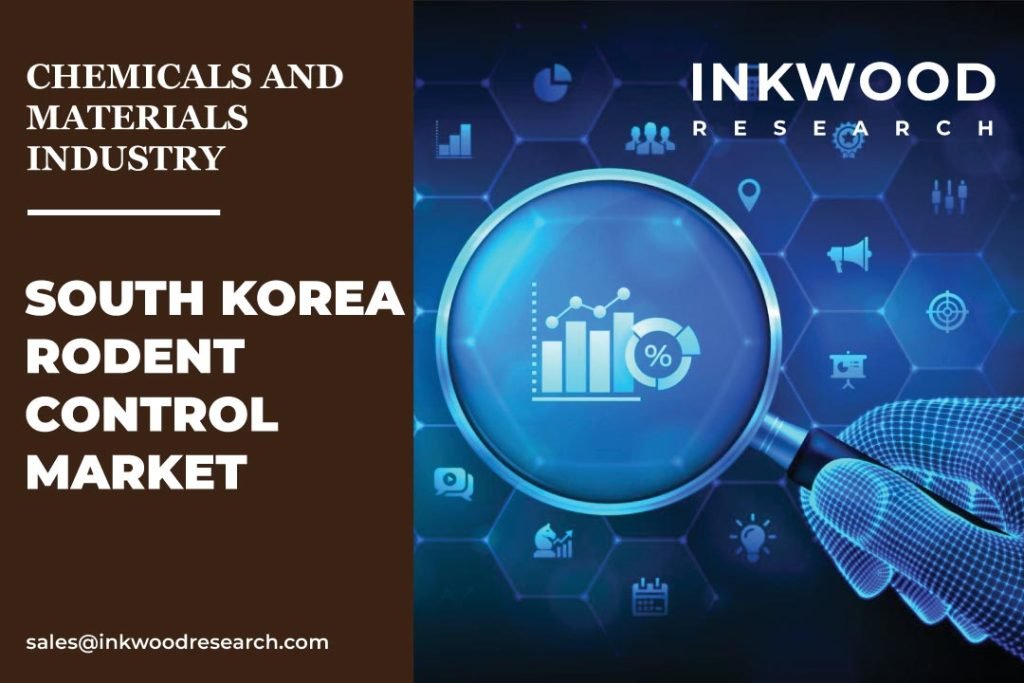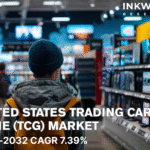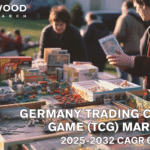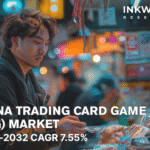SOUTH KOREA RODENT CONTROL MARKET FORECAST 2023-2030
SCOPE OF THE REPORT
South Korea Rodent Control Market by Type (Chemical, Mechanical, Biological, Other Types) Market by Application (Residential, Commercial, Industrial, Agriculture, Other Applications)
REPORTS » CHEMICALS AND MATERIALS » SPECIALTY CHEMICALS » SOUTH KOREA RODENT CONTROL MARKET FORECAST 2023-2030
MARKET OVERVIEW
The South Korea rodent control market is expected to reach a CAGR of 7.87% during the projection years of 2023-2030, with a revenue of $113.36 million by 2030.
The Asia-Pacific Plant Protection Commission has noted an increasing awareness among South Koreans concerning the health risks associated with pests, including diseases such as dengue fever, malaria, and Lyme disease. This heightened awareness has spurred a growing demand for pest control services within the region. The significance of pest control, particularly in the context of safeguarding public health, has taken center stage.

To Know More About This Report, Request a Free Sample Copy
Moreover, the South Korea rodent control market is predominantly concerned with two prevalent rodent species, the Norway rat (Rattus norvegicus) and the House mouse (Mus musculus). Collectively, these two species account for approximately 70% of rodent infestations in the country, as reported by the Korean Pest Control Association. Recognizing the prevalence of these species is imperative for tailoring effective pest control strategies in South Korea, ensuring that businesses and homeowners can address this challenge comprehensively.
The South Korea rodent control market is segmented into type and application. The application segment includes residential, commercial, industrial, agriculture, and other applications. The significance of rodent control in industrial applications is underscored by the multitude of challenges that rodents can pose to these environments. The consequences of rodent presence in industrial settings are far-reaching, encompassing product contamination through the droppings and urine of rodents, which can result in costly product recalls and financial losses for businesses. Additionally, rodents’ propensity to chew through electrical wiring, insulation, and building materials can lead to equipment damage and production downtime.
In industrial settings, the approaches to rodent control are contingent on the unique characteristics of the industry and the extent of the infestation. Common methodologies encompass the application of industrial-grade rodenticides, distinguished by their heightened potency compared to consumer-grade alternatives. Mechanical traps, including snap traps, glue traps, and live traps, serve as effective tools in rodent control. Electronic monitoring systems facilitate early detection of rodent activity, allowing for swift intervention. Additionally, exclusion measures involve sealing exterior cracks and holes to prevent rodents from gaining entry.
Effective rodent control is of utmost importance in the agricultural sector, where safeguarding crops and livestock is a top priority. Rodents present a multifaceted threat, causing damage to crops both in fields and during storage, potentially resulting in significant economic losses for farmers. Beyond the impact on crops, rodents can transmit diseases to livestock, including brucellosis, leptospirosis, and salmonellosis, leading to illnesses and fatalities among livestock, as well as the contamination of meat and dairy products.
The methods of rodent control employed in agriculture vary according to the specific agricultural activities and the severity of rodent infestations. Common methods encompass the use of rodenticides, designed to eliminate rodents by placing them in bait stations or treating burrows, as well as live traps for capturing rodents without causing harm. Additionally, exclusion methods involve sealing cracks and holes in structures to prevent rodent entry. Farmers and agricultural professionals are generally well-informed about the need for rodent control and are accepting of the various products and methods available. However, some farmers may have reservations about using poisons on their land, especially if they are engaged in organic farming, where the use of chemical pesticides is limited.
Some of the top companies operating in the South Korea rodent control market are Neogen Corporation, Syngenta AG, etc.
Neogen Corporation, headquartered in the United States, is an international food safety company. It supplies test kits and related products for the detection of harmful substances in food. It provides a comprehensive range of solutions and services for the food processing, animal protein and agriculture industries also serves animal industries, life sciences and toxicology.
REPORT SYNOPSIS
| REPORT SCOPE | DETAILS |
|---|---|
| Market Forecast Years | 2023-2030 |
| Base Year | 2022 |
| Market Historical Years | 2018-2022 |
| Forecast Units | Revenue ($ Million) |
| Segments Analyzed | Type and Application |
| Countries Analyzed | South Korea |
| Companies Analyzed | BASF SE, Bayer AG, Ecolab Inc, Neogen Corporation, Rentokil Initial PLC, Rollins Inc, Syngenta AG |
TABLE OF CONTENT
RESEARCH SCOPE & METHODOLOGY
- STUDY OBJECTIVES
- METHODOLOGY
- ASSUMPTIONS & LIMITATIONS
EXECUTIVE SUMMARY
- MARKET SIZE & ESTIMATES
- COUNTRY SNAPSHOT
- COUNTRY ANALYSIS
- SCOPE OF STUDY
- CRISIS SCENARIO ANALYSIS
- MAJOR MARKET FINDINGS
- INCREASING SHIFT TOWARDS INTEGRATED PEST MANAGEMENT (IPM)
- MANUFACTURERS NEED TO BE COMPLIANT WITH REGULATIONS
- RESIDENTIAL AND COMMERCIAL END-USERS DOMINATED THE RODENT CONTROL MARKET
MARKET DYNAMICS
- KEY DRIVERS
- RISING AWARENESS ABOUT THE HEALTH AND ECONOMIC RISKS ASSOCIATED WITH RODENT INFESTATION
- SURGE IN THE INCIDENCES OF PEST–BORNE DISEASES
- INCREASING URBANIZATION AND POPULATION GROWTH
- A GROWING NUMBER OF BUSINESSES ARE TURNING TO RODENT CONTROL SOLUTIONS
- KEY RESTRAINTS
- ENVIRONMENTAL CONCERNS ASSOCIATED WITH RODENTICIDE CHEMICALS
- HIGH COST OF RODENT CONTROL PRODUCTS AND SERVICES
- GOVERNMENT RESTRICTIONS AFFECTING THE RODENT CONTROL MARKET
- KEY DRIVERS
KEY ANALYTICS
- PARENT MARKET ANALYSIS: PEST CONTROL MARKET
- KEY MARKET TRENDS
- PEST ANALYSIS
- PORTER’S FIVE FORCES ANALYSIS
- BUYERS POWER
- SUPPLIERS POWER
- SUBSTITUTION
- NEW ENTRANTS
- INDUSTRY RIVALRY
- GROWTH PROSPECT MAPPING
- KEY BUYING CRITERIA
- EFFECTIVENESS
- EASE OF USE
- SAFETY
- LONGEVITY
MARKET BY TYPE
- CHEMICAL
- MECHANICAL
- BIOLOGICAL
- OTHER TYPES
MARKET BY APPLICATION
- RESIDENTIAL
- COMMERCIAL
- INDUSTRIAL
- AGRICULTURE
- OTHER APPLICATIONS
COMPETITIVE LANDSCAPE
- KEY STRATEGIC DEVELOPMENTS
- MERGERS & ACQUISITIONS
- PRODUCT LAUNCHES & DEVELOPMENTS
- PARTNERSHIP & AGREEMENTS
- BUSINESS EXPANSIONS & DIVESTITURES
- COMPANY PROFILES
- BASF SE
- COMPANY OVERVIEW
- PRODUCTS / SERVICES LIST
- STRENGTHS & CHALLENGES
- BAYER AG
- COMPANY OVERVIEW
- PRODUCTS / SERVICES LIST
- STRENGTHS & CHALLENGES
- ECOLAB INC
- COMPANY OVERVIEW
- PRODUCTS / SERVICES LIST
- STRENGTHS & CHALLENGES
- NEOGEN CORPORATION
- COMPANY OVERVIEW
- PRODUCTS / SERVICES LIST
- STRENGTHS & CHALLENGES
- RENTOKIL INITIAL PLC
- COMPANY OVERVIEW
- PRODUCTS / SERVICES LIST
- STRENGTHS & CHALLENGES
- ROLLINS INC
- COMPANY OVERVIEW
- PRODUCTS / SERVICES LIST
- STRENGTHS & CHALLENGES
- SYNGENTA AG
- COMPANY OVERVIEW
- PRODUCTS / SERVICES LIST
- STRENGTHS & CHALLENGES
- BASF SE
- KEY STRATEGIC DEVELOPMENTS
LIST OF TABLES
TABLE 1: MARKET SNAPSHOT – RODENT CONTROL
TABLE 2: SOUTH KOREA RODENT CONTROL MARKET, BY TYPE, HISTORICAL YEARS, 2018-2022 (IN $ MILLION)
TABLE 3: SOUTH KOREA RODENT CONTROL MARKET, BY TYPE, FORECAST YEARS, 2023-2030 (IN $ MILLION)
TABLE 4: SOUTH KOREA RODENT CONTROL MARKET, BY APPLICATION, HISTORICAL YEARS, 2018-2022 (IN $ MILLION)
TABLE 5: SOUTH KOREA RODENT CONTROL MARKET, BY APPLICATION, FORECAST YEARS, 2023-2030 (IN $ MILLION)
TABLE 6: LIST OF MERGERS & ACQUISITIONS
TABLE 7: LIST OF PRODUCT LAUNCHES & DEVELOPMENTS
TABLE 8: LIST OF PARTNERSHIPS & AGREEMENTS
TABLE 9: LIST OF BUSINESS EXPANSIONS & DIVESTITURES
LIST OF FIGURES
FIGURE 1: KEY MARKET TRENDS
FIGURE 2: PORTER’S FIVE FORCES ANALYSIS
FIGURE 3: KEY BUYING CRITERIA
FIGURE 4: SOUTH KOREA RODENT CONTROL MARKET, GROWTH POTENTIAL, BY TYPE, IN 2022
FIGURE 5: SOUTH KOREA RODENT CONTROL MARKET, BY CHEMICAL, 2023-2030 (IN $ MILLION)
FIGURE 6: SOUTH KOREA RODENT CONTROL MARKET, BY MECHANICAL, 2023-2030 (IN $ MILLION)
FIGURE 7: SOUTH KOREA RODENT CONTROL MARKET, BY BIOLOGICAL, 2023-2030 (IN $ MILLION)
FIGURE 8: SOUTH KOREA RODENT CONTROL MARKET, BY OTHER TYPES, 2023-2030 (IN $ MILLION)
FIGURE 9: SOUTH KOREA RODENT CONTROL MARKET, GROWTH POTENTIAL, BY APPLICATION, IN 2022
FIGURE 10: SOUTH KOREA RODENT CONTROL MARKET, BY RESIDENTIAL, 2023-2030 (IN $ MILLION)
FIGURE 11: SOUTH KOREA RODENT CONTROL MARKET, BY COMMERCIAL, 2023-2030 (IN $ MILLION)
FIGURE 12: SOUTH KOREA RODENT CONTROL MARKET, BY INDUSTRIAL, 2023-2030 (IN $ MILLION)
FIGURE 13: SOUTH KOREA RODENT CONTROL MARKET, BY AGRICULTURE, 2023-2030 (IN $ MILLION)
FIGURE 14: SOUTH KOREA RODENT CONTROL MARKET, BY OTHER APPLICATIONS, 2023-2030 (IN $ MILLION)
FAQ’s
RELATED REPORTS
-

UNITED STATES TRADING CARD GAME (TCG) MARKET FORECAST 2025-2032
-

GERMANY TRADING CARD GAME (TCG) MARKET FORECAST 2025-2032
-

CHINA TRADING CARD GAME (TCG) MARKET FORECAST 2025-2032
-

INDIA WIND ENERGY MARKET FORECAST 2025-2032
-

INDIA SOLAR ENERGY MARKET FORECAST 2025-2032
-

INDIA GREEN HYDROGEN MARKET FORECAST 2025-2032
-

INDIA GREEN BUILDING MATERIAL MARKET FORECAST 2025-2032
-

UNITED STATES DATA CENTER ENERGY STORAGE MARKET FORECAST 2025-2032
-

INDIA DATA CENTER ENERGY STORAGE MARKET FORECAST 2025-2032
-

GERMANY DATA CENTER ENERGY STORAGE MARKET FORECAST 2025-2032
